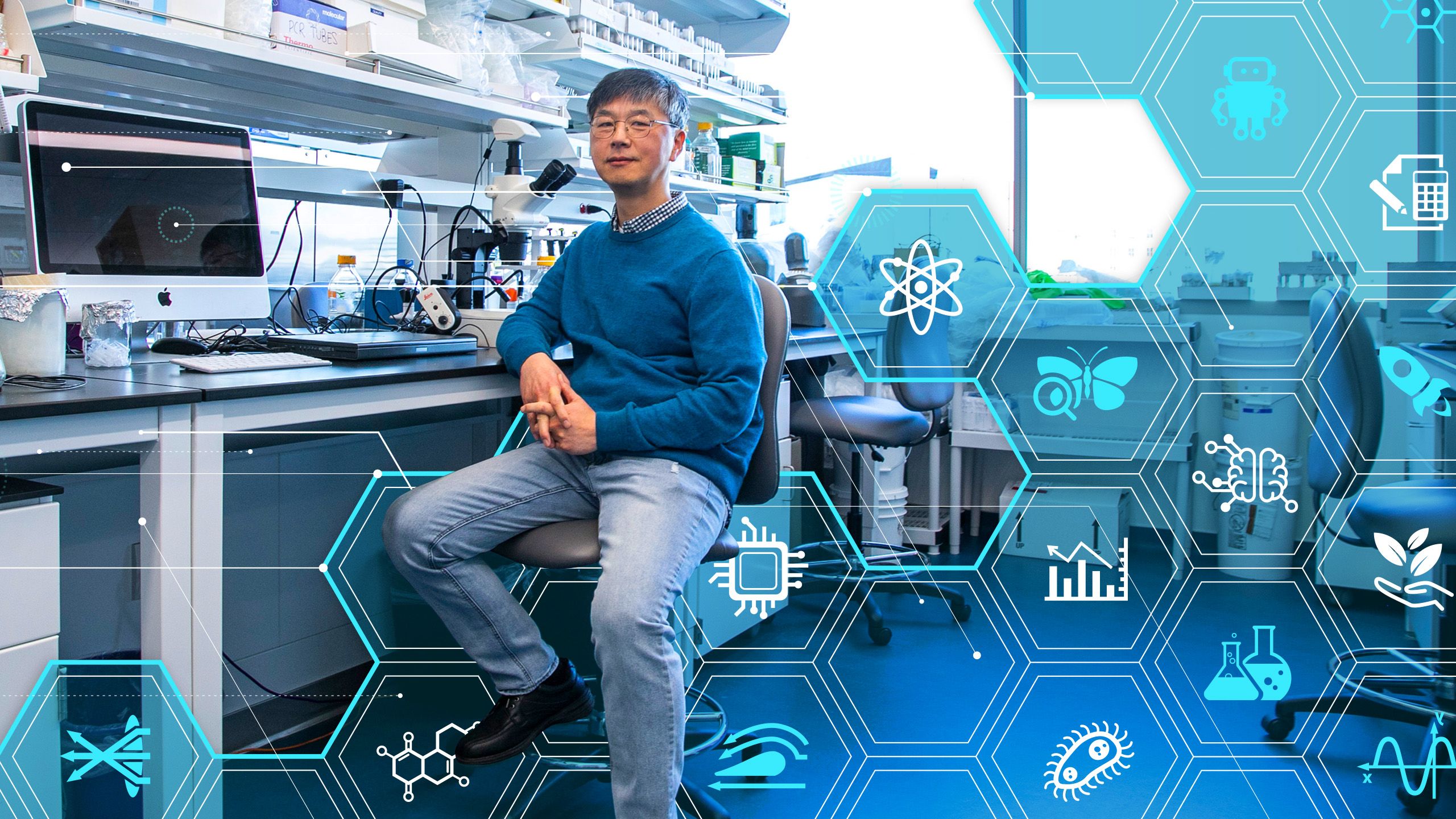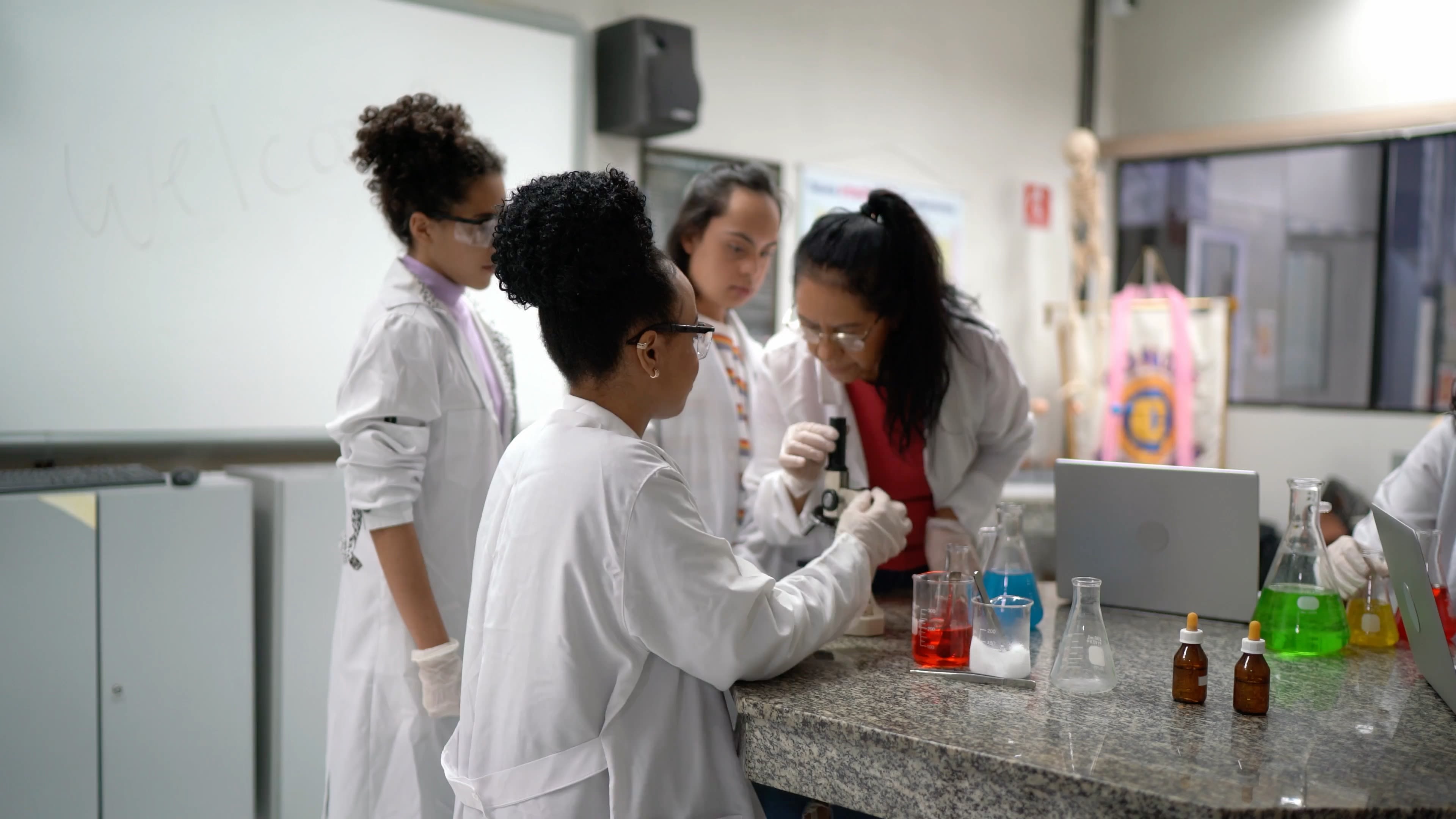STEM
for All

“I am a scientist.”
When Kwangwon Lee offers this simple statement, he’s not talking about himself—though he might well be. Lee, an associate professor of biology and program director of undergraduate biology at Rutgers–Camden, is also director of MARC U*STAR, the NIH-funded program on campus that provides training, support, and mentorship to undergraduate students from underrepresented backgrounds.


Specifically, the statement refers to one of the most important takeaways from Lee’s research: the inability among many minority students to picture themselves as scientists in the first place. It’s what Lee and his colleagues want more students of color to be able to say, to themselves and to the world. Removing that barrier of vision, Lee says, will require “changing our culture, so that students feel welcome and can have that STEM identity.”
That’s one conclusion from a highly complex self-study (so called because its focus was on the STEM environment at Rutgers-Camden), “Diversity, Equity and Inclusion in STEM.” The as-yet unpublished study took two years to complete and involved three Rutgers entities: Rutgers–Camden Driving Change—a grassroots group of faculty, staff, and students dedicated to increasing diversity, equity, and inclusion (DEI) across the campus; the Senator Walter Rand Institute for Public Affairs (WRI), an applied research and public service center focused on southern New Jersey; and the Data Equity Group, charged with collecting data to advance DEI. The study’s principal investigator was Ross Whiting, WRI’s associate director, who oversaw two co-investigators and a five-person research team, with Lee providing guidance throughout.

Kwangwon Lee, associate professor of biology and program director of undergraduate biology, and student Harjit Khaira
Kwangwon Lee, associate professor of biology and program director of undergraduate biology, and student Harjit Khaira

David Salas-de La Cruz, associate professor of chemistry in the Camden College of Arts, and Abby Morales, a Ph.D. student
David Salas-de La Cruz, associate professor of chemistry in the Camden College of Arts, and Abby Morales, a Ph.D. student

courtesy of Howard Hughes Medical Institute, hhmi.org
courtesy of Howard Hughes Medical Institute, hhmi.org
The study, said Lee, is important for its remarkable depth and its goal of looking beyond mere data to determine the barriers to minority engagement in STEM. “There’s a lot of quantitative data out there,” he noted. “What’s unique about this study is its qualitative data, its focus on the nuances that the numbers can’t express.”
The self-study involved developing a series of questions that the research team then posed to 43 participants—22 STEM faculty, staff, and administrators and 21 graduate and undergraduate students enrolled in STEM courses or a STEM degree program. The answers provide a striking window into the forces working against greater inclusion of minorities in STEM and suggest ways to move toward greater equity.


Seeing the Scientist Within
Rutgers–Camden has a diverse student body, with white students making up 42 percent of the population; Black students, 18 percent; Latinx, 18 percent; and Asian, 11 percent. That distribution, however, isn’t represented in the STEM fields, where white students predominate. The inability on the part of minority students to envision themselves as part of the scientific community is one force keeping them from being more involved in STEM.
“We have 50 to 70 percent first-generation students, depending on what year you’re looking at. So they haven’t been exposed to all these STEM career options.”
Lee notes that a significant number of students from underrepresented backgrounds enter the biology program with the objective of getting into medical school, but many of them, in fact, don’t really want to become doctors. “It’s not their idea,” Lee says; “it’s more their parents’ idea.” When these same students take Lee’s first-year course “Exploring Careers in Biology,” he added, “they say it’s a life-changing experience. Once they find out there are so many other options, they flourish.”
Elizabeth Hardy (CCAS ’24), a first-generation student majoring in biology, health sciences, and psychology, is a case in point. Initially, the young African American woman from Highland Park, New Jersey, planned to go into nursing, but while fulfilling her pre-nursing requirements, she took a class in biochemistry, and it sparked a passion for science and scientific research. Then, Terri-Ann Kelly, an assistant professor and one of her mentors in the School of Nursing, posed a life-changing question: If you weren’t going to be paid to work, would you still go into nursing? “It was a huge eye-opener,” Hardy said of Kelly’s question, her answer to which was an emphatic “no.” Not long after, she changed her major, with the intention of getting a Ph.D. in nutritional sciences. Currently, she’s working in the lab run by neuroscientist Nathan Fried, studying the effects of monosodium glutamate, or MSG, on the nervous system of fruit flies.

Elizabeth Hardy (CCAS '24)
Elizabeth Hardy (CCAS '24)
Lee noted that family support is extremely important in encouraging students to enter a STEM field. “We need to educate families that a STEM career can offer a secure future,” he said.
Finding Faculty Role Models
Elizabeth Hardy benefitted from the mentorship of Kelly, a faculty member who happens to be Black. And the self-study made clear that a lack of STEM role models in students’ families and communities is a significant factor keeping them from envisioning a future in science. Student respondents expressed the need for greater racial, gender, and LGBTQIA+ representation in faculty and curricula, and faculty acknowledged that this is problematic. “When Black and Latinx students don’t see someone like themselves on the faculty to look up to, that’s a real problem,” Lee noted.
Many faculty respondents observed that, despite an administrative push to hire more racially diverse faculty, accomplishing that aim is still a challenge, in part because of a lack of racial diversity on search committees and the relatively limited number of faculty of color in the STEM fields.
Overcoming a Prior Deficit
One of the significant barriers uncovered in the study, and acknowledged by both students and faculty, was that many minority students come to college ill-prepared for studying science. The researchers attributed this to “pre-university systemic inequalities”—put simply, it means that minority students are much less likely than their white counterparts to have received a strong background in science in middle and high school.
As ways to overcome that lack of preparation, student respondents mentioned the need for more mentoring and academic guidance as well as something called “differentiated teaching”—a personalized approach that takes into account students’ diverse educational backgrounds and abilities. And many faculty felt that they needed greater training and resources to help promote DEI in STEM.





Combating Financial Disadvantages
Students of color, the study revealed, are often indirectly barred from participating in events—like mixers, talks, and networking opportunities—that would allow them to feel integrated into the campus’s scientific community. That’s because many are working to support themselves and/or their families, or they live off campus and spend part of the day commuting. Students said that those jobs and other off-campus responsibilities also keep them from participating successfully in group work. One solution posited by many respondents was funding to enable students to spend more time on campus and in activities that enhance the pursuit of science and promote a sense of community inclusion.
Moving Forward
Lee acknowledges that the study, rich as it is in details and specifics, is only a first step. He’s eager to spread the word about both the study and the Driving Change initiative that helped spawn it. “I really want to have a larger group of faculty and administrators join the grassroots effort,” he said, “and I hope the study can offer guiding principles to how we can intervene to improve our promotion of DEI in STEM education.”

Creative Design: Karaamat Abdullah
Photography: Ron Downes Jr.